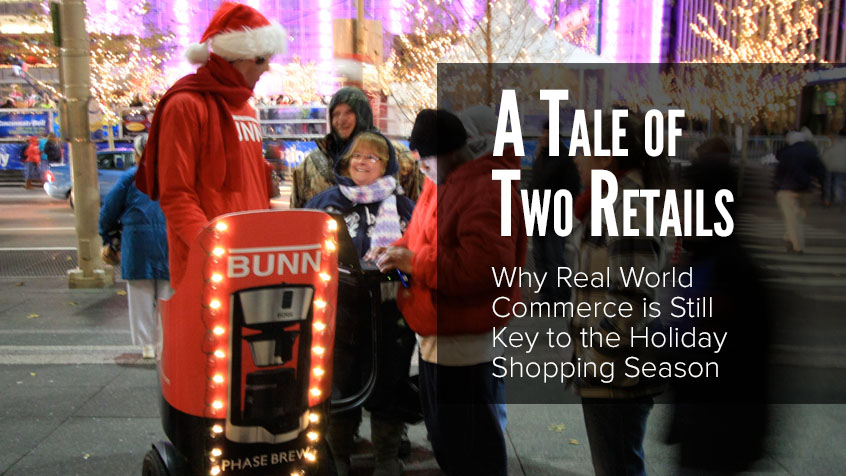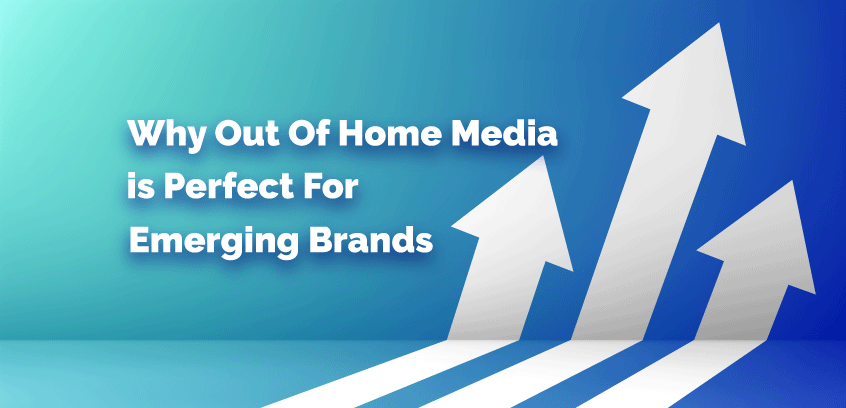There is a theory in evolution called punctuated equilibrium. Essentially what it says is that evolution is not a steady, plodding, gradual accumulation of incremental changes over time. Instead, it says that evolution is long periods of relative stasis where very little changes, punctuated by short bursts of rapid, major changes, moving forward in fits and starts.
Think of it this way. You’re walking around an Olympic race track, very….very…. slowly, taking tiny little steps for quite a long time. Maybe you cover 200 yards in an hour. Then suddenly, and without much warning, you break into a flat-out Usain Bolt sprint and cover the next 200 yards in 19.19 seconds.
Right now, Out of Home is Usain Bolt, and the starter’s pistol is in the air.
Where is Out of Home Headed?
Last week I had the distinct pleasure of attending my first OAAA/Geopath conference in New Orleans. With all the changes we’ve been seeing in the industry over the past few years I was excited to see where this was all headed. I wanted to see if the whole industry was as excited as I am. Was there broad support for moving forward, adopting and internalizing the advancements in technology that have the capacity to reshape the media, seemingly before our very eyes at some points?
To say I had high hopes would be an understatement. What I experienced far exceeded my expectations.
In the punctuated equilibrium model of evolution, the periods of rapid change are often prompted by some external forces like environment, climate, disease, etc. In Out of Home there are three main areas where we see the changes occurring, and they are being fueled by several different factors. Here’s what I took away from the conference…
• The way Out of Home media is measured and planned is undergoing a radical change. The enormous growth of mobile technology, and smart devices is injecting huge amounts of data into marketing and revolutionizing media in a variety of ways.But data in and of itself is not useful, it must provide insights.
For OOH, most importantly it is allowing for a new level of measurement & targeting. The availability of mobile geolocation data is allowing for new platforms to be developed that are not based on delivering media measurement, but instead on delivering an audience measurement.
The work being undertaken in by Geopath, and by media companies, will give OOH planners an unprecedented level of audience detail and segmentation. Out of Home media can now be planned and delivered based on audience criteria that is on par with other media like television, radio & digital.
• The numbers to support OOH are coming in, and they are very strong. Mobile & Online have also helped to provide betters ways to measure the impact of OOH. The result is that there has been a burst of recent research on the effectiveness of OOH.
The data is now there to show that OOH can drive online activation, prompt mobile engagement, and deliver ROI better than anyone might have previously thought. The amplification of other media that we all believed in our gut was happening, can now be verified with real data. That data will provide strong support rationale to justify the inclusion of a higher percentage of OOH in media plans.
• Out of Home is connecting, not just to consumers, but to other media as well. In the past OOH was a siloed media, cut off from consumers by its static nature, cut off from other channels by its lack of reliable measurement, and its lack of verifiable results. With the influx of mobile & digital technologies OOH is removing both those impediments.
Technologies like geofencing, mobile retargeting and facial recognition are making it possible to connect directly to consumers, and to help drive other media. It is becoming not just possible, but crucial to make sure that your media plan takes advantage of the ability of OOH to integrate with your other media channels. The real time nature of new digital OOH formats also allows for more contextually relevant messaging – connecting creative execution to factors like time, weather, news, and audience segmentation.
Any of these factors on their own would be significant steps forward in an industry that, in the past, had sometimes seemed to move at a glacial pace. But all of these factors, converging at once, feeding into each other, are creating the perfect environment for OOH to enter in a “sprint” phase, taking a major leap forward.
Pass the gravy please…

Think for a moment about a big, Norman Rockwell, family Thanksgiving dinner. The dining room table is set, the “special” china is laid out, the candles are lit, the feast of Dionysian proportions is spread before the guests.
If media budgets were a Norman Rockwell Thanksgiving dinner, Out of Home has never been sitting at the main table with TV, and Online (the grown-ups). OOH wasn’t even sitting at the kids table with radio, print & direct mail. It probably wasn’t even in the kitchen with that random cousin who showed up unannounced. At 4-5% of media budgets, OOH was out the back door, waiting for scraps to be thrown out as the table was cleared.
With the changes that are taking place right now, Out of Home is poised to come inside. It is ready to move, not just incrementally to the kitchen or the kids table, but to leapfrog its way to the big table, taking its place as a core media buy alongside TV & digital.
“Runners Take Your Marks”
I left the convention more excited and hopeful about OOH than I have ever been. We should consider ourselves fortunate to be working in this industry at this exact time, when OOH is poised to take a huge evolutionary leap forward. It is moving from a media that is treated as an afterthought based solely on location and traffic counts, to a media based on dynamic audience delivery, mobile measurement and integration, precise targeting and attribution, supporting analytics/data and contextually relevant creative.
We are Usain Bolt, in the blocks, muscles tensed, and the starters pistol is about to fire. The only question is how fast and how far can we run?





